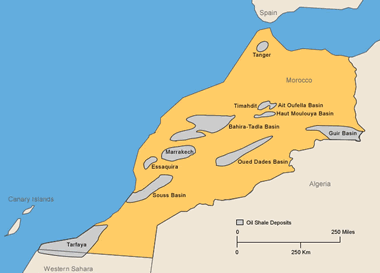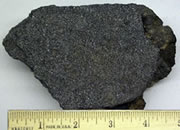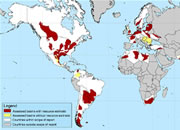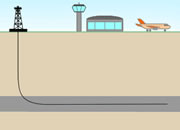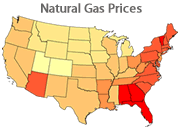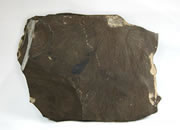Oil-shale deposits have been identified at ten localities in Morocco, the most important of which are Upper Cretaceous marinites, not unlike those of Egypt, Israel, and Jordan. The two deposits that have been explored most extensively are the Timahdit and the Tarfaya deposits; about 69,000 analyses have been made of samples from 157 boreholes totaling 34,632 m in length and from 800 m of mine workings.
The Timahdit deposit, located about 250 km southeast of Rabat, underlies an area about 70 km long and 4 to10 km wide within a northeast-trending syncline. The thickness of the oil shale ranges from 80 to 170 m. The moisture content ranges from 6 to 11 percent, and the sulfur content averages 2 percent. Total oil-shale reserves are estimated at 18 billion tons within an area of 196 km2; oil yields range from 20 to 100 l/t and average 70 l/t.
The Tarfaya deposit is located in the southwesternmost part of Morocco, near the border with Western Sahara. The oil shale averages 22 m in thickness and its grade averages 62 l/t. The total oil-shale resource is estimated at 86 billion tons within a 2,000-km2 area. The moisture content of the Tarfaya oil shale averages 20 percent and the sulfur content averages about 2 percent.
Phosphate rock and uranium are also associated with the Cretaceous marinites. One drill core (location uncertain) revealed a maximum P2O5 content of about 17 percent and U308 concentrations of as much as about 150 ppm.
In the 1980s several energy companies from North America and Europe conducted exploratory drilling and experimental mining and processing of Moroccan oil shale, but no shale oil was produced (Bouchta, 1984; Office National de Recherches et D'exploitation Petrolieres, 1983?).
